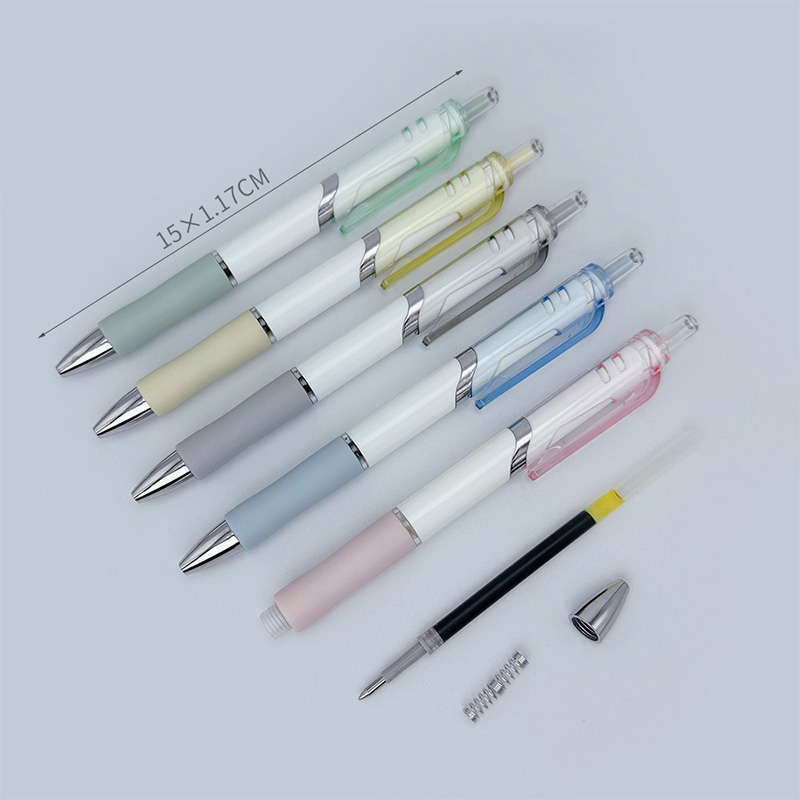In a fast-paced digital world, where typing and tapping have become the norm, writing pens continue to hold their ground—not merely as tools of necessity, but as instruments of identity, craftsmanship, and convenience. From everyday note-taking to luxury writing experiences, pens are evolving in form and function to meet the diverse demands of consumers across industries and generations.
This evolution is not just about ink or ergonomics; it's about the multifaceted role pens play in communication, branding, sustainability, and creativity. As both functional and emotional products, writing pens are writing a new chapter in the modern stationery industry.
Expanding Demand Across Sectors
Despite assumptions that keyboards and styluses would render traditional pens obsolete, the market for writing pens is diverse and thriving. Office workers, students, healthcare professionals, and artists all continue to depend on pens for tasks ranging from technical documentation to artistic expression.
In the education sector, pens remain indispensable tools for students of all ages. While laptops and tablets are increasingly used in classrooms, writing by hand is still emphasized as a means of improving memory retention and fine motor skills. Schools often opt for affordable and reliable ballpoint or gel pens, while college students favor pens that offer comfort and long-lasting performance for lecture note-taking.
Meanwhile, in corporate environments, pens serve dual purposes—utility and branding. Branded pens are often distributed at conferences, meetings, or as client gifts, reinforcing a company’s image while providing something practical. In many businesses, employees still prefer to jot down ideas quickly on notepads or meeting agendas with a good pen, citing speed and tactile satisfaction over typing.
Innovation Driving Pen Design
The pen industry has not stood still. Manufacturers continue to invest in materials, ink technology, and ergonomic design to keep pace with changing consumer expectations. Modern pens are available with low-viscosity inks for smoother writing, pressure-sensitive tips for greater control, and fast-drying formulas that reduce smudging—especially for left-handed users.

Materials have also improved. From soft-touch rubberized grips to recycled plastics and metal alloy barrels, pen designs now balance aesthetics, comfort, and sustainability. Refillable systems and interchangeable components are becoming more common, reflecting consumer desire for products that are both eco-friendly and cost-effective.
Even basic pen categories are seeing upgrades. For example:
Gel pens now come in archival-quality ink for long-lasting documents
Ballpoint pens are being re-engineered for ultra-smooth performance
Rollerball pens offer ink delivery systems that bridge fountain pen fluidity with modern convenience
Sustainability Shapes Consumer Choice
Environmental awareness is influencing buying decisions in the stationery market, and pens are no exception. Many brands are now promoting recyclable pens, refillable cartridges, and biodegradable materials. Some have introduced pen barrels made from wheat straw, bamboo, or recycled water bottles.
Major pen manufacturers have also joined global sustainability movements, pledging to reduce packaging waste and carbon footprints. Office supply chains are responding by offering eco-certified pen options and encouraging bulk refill systems over single-use pens.
According to a recent market study, consumer preference is shifting toward products that last longer and create less waste, with writing pens being one of the visible changes in workplace procurement policies.
Writing as a Lifestyle Choice
Pens are not just writing tools—they are expressions of personality and lifestyle. From minimalist designs and sleek metal finishes to vibrant ink colors and artistic motifs, pens are being customized and curated like never before.
The growth of pen enthusiast communities, pen shows, and online retailers has fueled demand for high-end and boutique writing pens. Luxury brands such as Montblanc, Parker, and LAMY have successfully positioned pens as status symbols and heritage items, while indie makers appeal to a new generation of collectors with unique craftsmanship and storytelling.
This personalization trend extends to the mass market as well. Pens with engraved names, motivational messages, or themed packaging are popular gift items, particularly for graduations, holidays, and corporate events.
Adapting to Hybrid Work and Remote Learning
The rise of hybrid work and online learning has reinforced the need for physical writing tools. While much of our communication has gone digital, many people still prefer analog methods for brainstorming, planning, and journaling.